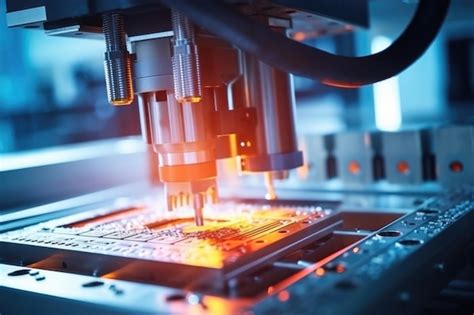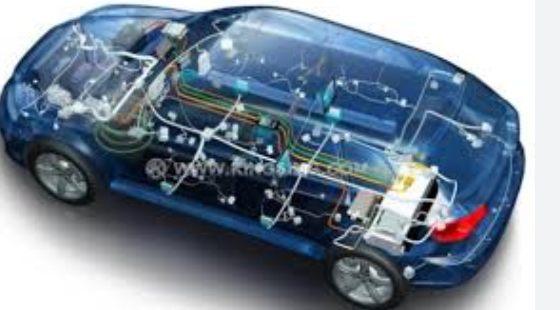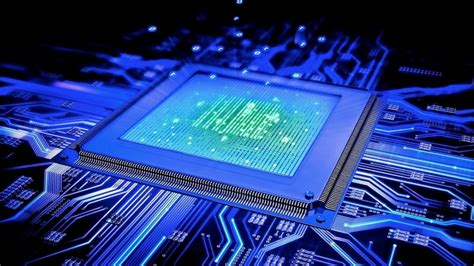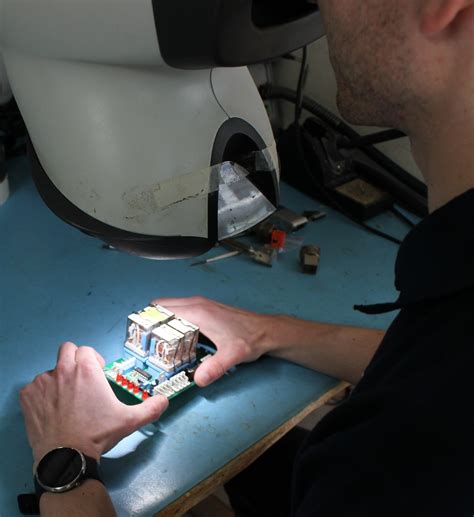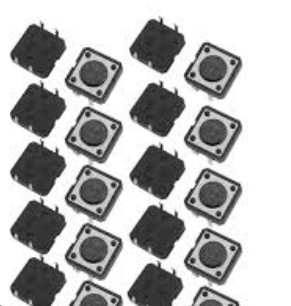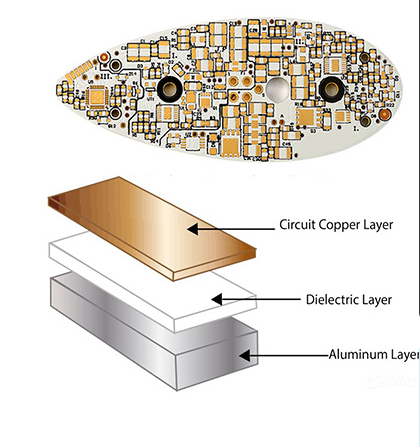Automated Circuit Board Assembly: Enhancing Manufacturing Reliability

Key Takeaways
Modern PCB assembly processes leverage precision robotics to achieve micron-level accuracy in component placement, directly addressing the challenges of miniaturization in modern electronics. The integration of PCBA (Printed Circuit Board Assembly) systems with AI-driven optical inspection ensures real-time defect detection, reducing post-production rework by up to 60% compared to manual methods. Advanced error-reduction strategies, such as automated solder paste inspection and in-process testing protocols, now form a critical layer of quality assurance, particularly for high-density interconnect designs.
Meanwhile, smart automation frameworks synchronize pick-and-place robotics with conveyorized workflows, cutting cycle times while maintaining traceability across batches. This coordination is further enhanced by closed-loop feedback systems that adjust parameters like temperature and pressure dynamically, ensuring consistency even during high-volume production runs. As industries transition toward Industry 4.0 standards, predictive maintenance algorithms embedded within PCB assembly lines are becoming pivotal in preempting equipment failures, thereby minimizing unplanned downtime. These advancements collectively elevate manufacturing reliability, positioning PCBA as a cornerstone of next-generation electronics fabrication.
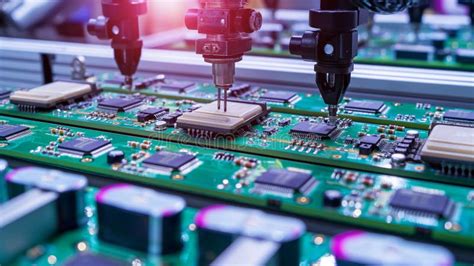
Automated PCB Assembly Robotics Advancements
Modern advancements in PCB assembly robotics are redefining precision and efficiency in electronics manufacturing. Cutting-edge robotic systems now integrate adaptive motion control and multi-axis articulation to handle components as small as 01005 metric packages (0.4 mm x 0.2 mm) with sub-10-micron accuracy. These systems leverage PCBA-optimized end effectors, such as vacuum nozzles with self-cleaning capabilities, to minimize downtime caused by particulate contamination.
A key innovation lies in the integration of machine learning algorithms that analyze historical placement data to predict and correct misalignments in real time. For instance, robotic arms equipped with vision-guided systems can now adjust solder paste deposition dynamically, reducing reflow defects by up to 35%.
Industry Insight: "The shift toward collaborative robots (cobots) in PCB assembly lines allows seamless human-machine interaction, particularly for low-volume, high-mix production scenarios where flexibility is critical."
Furthermore, modular robotic workstations enable rapid reconfiguration for diverse board geometries, supporting everything from rigid FR-4 substrates to flexible polyimide circuits. Advanced force-feedback mechanisms ensure consistent pressure during component placement, preventing pad damage even with ultra-thin 0.2 mm PCBs. By combining PCBA-specific tooling with closed-loop calibration systems, manufacturers achieve first-pass yield improvements exceeding 92%, while throughput rates surpass 25,000 placements per hour in high-density configurations. This evolution underscores how robotics not only accelerates production but elevates the repeatability required for next-generation IoT and automotive electronics.
AI-Driven Quality Control in Electronics
Modern PCB assembly processes now integrate artificial intelligence to address microscopic defects and process variations that traditional inspection methods might overlook. AI-driven systems leverage machine learning algorithms to analyze thousands of PCBA units in real time, identifying anomalies such as solder bridging, component misalignment, or thermal stress patterns. By combining automated optical inspection (AOI) with neural networks, these systems achieve defect detection accuracy rates exceeding 99.5%, significantly reducing false positives and human oversight.
Furthermore, AI-powered analytics enable predictive maintenance by monitoring equipment performance trends, flagging potential malfunctions before they disrupt production. This proactive approach minimizes downtime while ensuring consistent adherence to IPC-A-610 standards. For high-mix, low-volume PCB assembly lines, adaptive AI models optimize inspection protocols dynamically, adjusting sensitivity thresholds based on component type or board complexity. Such flexibility not only accelerates throughput but also maintains rigorous quality benchmarks across diverse product portfolios.
By embedding real-time feedback loops into PCBA workflows, manufacturers can iteratively refine assembly parameters, creating a self-improving ecosystem that aligns with Industry 4.0 principles. This synergy between automation and intelligence establishes a new paradigm where precision and reliability become inherent to every production cycle.
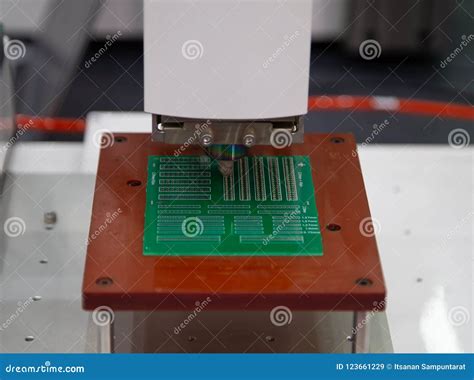
Error Reduction Strategies for Circuit Boards
Modern PCB assembly processes leverage advanced technologies to minimize defects and ensure operational consistency. Central to these efforts are AI-powered inspection systems that analyze solder joints, component placement, and trace integrity with micron-level precision. By integrating machine learning algorithms, manufacturers can detect deviations in real time, reducing human oversight and accelerating corrective actions. For instance, automated optical inspection (AOI) systems cross-reference design files against physical boards, flagging anomalies like misaligned capacitors or insufficient solder paste deposition.
Another critical strategy involves predictive maintenance for PCBA equipment, where IoT-enabled sensors monitor robotic arms and pick-and-place machines for wear patterns. This proactive approach prevents mechanical failures that could introduce errors during high-speed production. Additionally, standardized workflows—such as closed-loop feedback between assembly stations and quality control units—create a self-optimizing ecosystem. A recent study by SMT Intelligence highlights how these integrated systems reduce defect rates by up to 62% compared to manual processes.
To further enhance reliability, manufacturers employ traceability protocols that track each board through every stage of PCB assembly. This ensures rapid root-cause analysis for any detected flaws, enabling continuous refinement of production parameters. By combining these strategies, the industry achieves not only error mitigation but also scalable precision for complex, high-density designs.
Smart Automation Streamlining Production Lines
Modern PCB assembly workflows now integrate smart automation systems that synchronize production stages with unprecedented coordination. By embedding IoT-enabled sensors and real-time monitoring tools, PCBA lines achieve dynamic adjustments to material flow, equipment performance, and throughput rates. For instance, robotic arms equipped with vision-guided alignment adapt instantly to component variations, while conveyor systems autonomously reroute boards to avoid bottlenecks—reducing idle time by up to 40%. These adaptive mechanisms enable manufacturers to handle high-mix, low-volume orders without compromising speed, a critical advantage in meeting evolving market demands.
Central to this transformation is the fusion of automated circuit board assembly with machine learning algorithms. Predictive maintenance protocols analyze equipment vibration and thermal data to preemptively flag potential failures, cutting unplanned downtime by over 60%. Simultaneously, AI-powered optical inspection stations cross-verify solder joint quality against 10,000+ reference images, ensuring defects are identified at sub-micron precision. This closed-loop feedback between assembly robots and quality systems creates a self-optimizing pipeline, where each cycle refines process parameters for tighter tolerances. As factories transition to lights-out production models, such integrations underscore how PCBA automation isn’t just accelerating output—it’s redefining operational resilience.
Ensuring Reliability Through Robotic Assembly
Modern PCB assembly processes leverage robotic systems to achieve unprecedented consistency in electronics manufacturing. By integrating precision robotics, manufacturers eliminate human-driven variability in tasks like component placement, soldering, and inspection. For instance, high-speed pick-and-place machines position surface-mount devices (SMDs) with micron-level accuracy, reducing misalignment errors by over 98% compared to manual methods. These systems operate continuously, maintaining PCBA quality even during high-volume production runs.
A key advantage of robotic automation lies in its ability to execute repeatable workflows with minimal deviation. Advanced vision systems paired with force-sensitive actuators ensure components are seated correctly, while real-time feedback loops adjust parameters like solder paste volume or temperature. This closed-loop control minimizes defects such as tombstoning or cold joints, which are common pain points in traditional assembly.
| Metric | Robotic Assembly | Manual Assembly |
|---|---|---|
| Placement Accuracy | ±0.025mm | ±0.1mm |
| Defect Rate | <0.2% | 1.5-3% |
| Throughput (units/hr) | 1,200-2,500 | 200-400 |
| Consistency | 99.8% | 92-95% |
Furthermore, robotic PCB assembly lines integrate seamlessly with AI-driven inspection tools, creating a self-optimizing ecosystem. Automated optical inspection (AOI) systems cross-validate each solder joint against predefined quality benchmarks, flagging anomalies for immediate correction. This synergy between hardware and software not only accelerates fault detection but also builds traceability into every PCBA unit, critical for industries like aerospace and medical devices where reliability is non-negotiable. By standardizing processes that were once prone to human error, robotic systems establish a foundation for scalable, high-yield manufacturing without compromising on precision.
Future Trends in Automated Manufacturing Tech
The evolution of PCB assembly technologies continues to accelerate, driven by advancements in IoT-enabled systems and machine learning algorithms. Industry leaders predict that PCBA processes will increasingly integrate digital twin simulations, enabling manufacturers to test configurations virtually before physical production. This reduces material waste and accelerates time-to-market for complex electronics. Additionally, collaborative robots (cobots) equipped with adaptive grippers are set to enhance flexibility in handling diverse component sizes during PCB assembly, particularly in high-mix, low-volume production environments.
Another emerging trend involves edge AI for real-time defect detection, which complements traditional optical inspection systems by analyzing micro-level anomalies missed by human operators. For instance, innovative projects already demonstrate how AI-driven analytics optimize solder paste application in PCBA, ensuring millimeter-level precision. Furthermore, sustainable practices are gaining traction, with manufacturers adopting closed-loop recycling systems for excess materials and energy-efficient automation tools. These innovations not only align with global environmental standards but also reinforce the reliability of automated PCB assembly workflows. As these technologies mature, seamless interoperability between hardware and software will redefine scalability in electronics manufacturing.
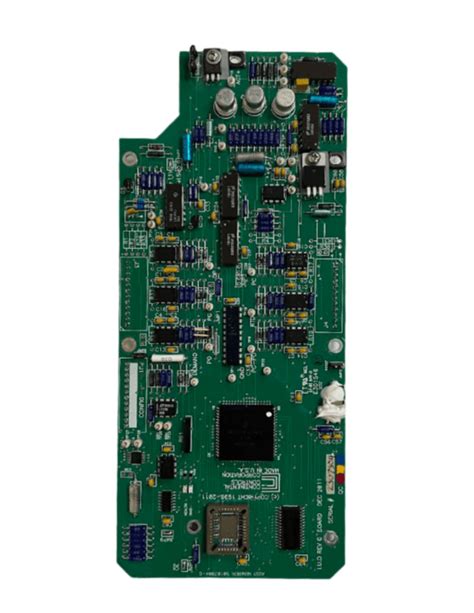
Precision Robotics Enhancing PCB Standards
Modern PCB assembly processes are achieving unprecedented accuracy through advanced robotic systems capable of micron-level component placement. These vision-guided robots utilize high-resolution cameras and machine learning algorithms to align surface-mount devices (SMDs) with tolerances under 10 microns, surpassing manual assembly capabilities. The integration of PCBA-specific automation tools ensures consistent solder paste application and thermal profiling during reflow, minimizing voids or cold joints that compromise circuit reliability.
By replacing error-prone manual workflows, precision robotics reduce defect rates in PCB assembly by up to 67%, as reported by industry benchmarks. This technological leap supports complex designs, including multi-layer boards and ultra-fine-pitch components, while maintaining compliance with IPC-A-610 and J-STD-001 standards. Real-time feedback mechanisms further enable adaptive calibration, compensating for material variances or environmental fluctuations during production.
As manufacturers adopt these systems, the relationship between robotic accuracy and end-product durability becomes increasingly evident. Enhanced PCBA quality directly correlates with extended operational lifespans in critical applications, from medical devices to aerospace systems, establishing robotics as a cornerstone of modern electronics manufacturing.

AI Integration for Consistent Product Quality
Modern PCB assembly processes are increasingly leveraging artificial intelligence to eliminate variability in manufacturing outcomes. By integrating AI-driven inspection systems, manufacturers can analyze thousands of PCBA components in real time, identifying microscopic defects like soldering anomalies or misaligned parts with 99.9% accuracy. These systems utilize machine learning algorithms trained on vast datasets of historical production data, enabling continuous improvement in fault detection rates. For instance, advanced vision systems paired with AI can adapt to new circuit board designs within minutes, reducing calibration downtime by over 40%.
Beyond defect detection, AI optimizes process parameters dynamically. Temperature controls, solder paste application, and component placement speeds are adjusted autonomously based on real-time environmental feedback, ensuring each PCB assembly batch meets stringent reliability benchmarks. This adaptive learning approach minimizes human intervention while maintaining traceability—critical for industries like aerospace and medical devices. As a result, manufacturers report up to 30% fewer rework cycles and a 15% improvement in throughput. By embedding AI at every stage of PCBA workflows, the industry is achieving unprecedented consistency, laying the foundation for smarter, self-correcting production ecosystems.
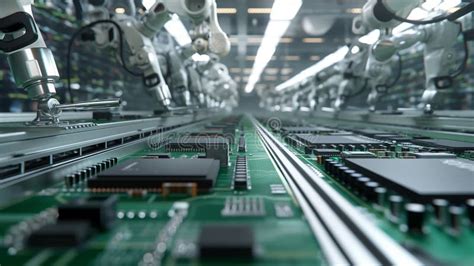
Conclusion
The evolution of PCB assembly underscores a transformative shift in electronics manufacturing, where precision robotics and AI-driven systems converge to redefine reliability. By integrating advanced PCBA workflows, manufacturers achieve unparalleled consistency in component placement, soldering, and testing—critical factors for high-performance circuit boards. These automated systems minimize human error while optimizing throughput, ensuring that even complex designs meet stringent quality benchmarks.
As industries prioritize scalability, the role of smart automation becomes indispensable. Real-time analytics and adaptive machinery enable rapid adjustments during production, reducing waste and downtime. For instance, comparisons between manual and automated techniques highlight how PCB assembly transitions from labor-intensive processes to data-driven precision, particularly in high-volume applications.
Looking ahead, the fusion of machine learning with PCBA technologies promises further enhancements in defect detection and predictive maintenance. This progression not only elevates manufacturing standards but also positions automated systems as the backbone of next-generation electronics—delivering products that align with global demands for durability and performance. Ultimately, the shift toward fully automated workflows signifies a commitment to innovation, where reliability is no longer aspirational but assured.
Frequently Asked Questions
How does automated PCB assembly improve manufacturing reliability?
Automated PCBA systems utilize precision robotics to achieve micron-level accuracy, minimizing human error. Advanced AI algorithms perform real-time defect detection, ensuring consistent quality across production batches.
What error-reduction strategies are used in modern PCB assembly lines?
Modern facilities implement automated optical inspection (AOI) and X-ray testing to identify soldering defects or component misalignments. Machine learning models analyze historical data to predict and prevent recurring issues.
Can PCBA automation handle complex circuit board designs?
Yes, high-speed placement machines and adaptive programming enable assembly of multilayer boards with 01005-sized components. Smart feeders automatically adjust material supply for mixed-technology boards.
How does automation impact PCB assembly costs?
While initial investments are higher, automated systems reduce long-term expenses through 24/7 operational efficiency and waste minimization. Error correction costs drop by up to 75% compared to manual processes.
What future trends will shape PCBA technology?
Emerging IoT-enabled monitoring and self-optimizing robotic systems will further enhance precision. Digital twin integration allows virtual testing of assembly workflows before physical production.
Explore Advanced PCB Assembly Solutions
For tailored automation strategies that align with your manufacturing requirements, please click here: https://www.andwinpcb.com/pcb-assembly/.

